A Poet of Word and Image
Mary Heebner Melds
Myths and Materiality into
Uniquely Joyful Creations
By Roger Durling | Photos by Macduff Everton
March 21, 2024
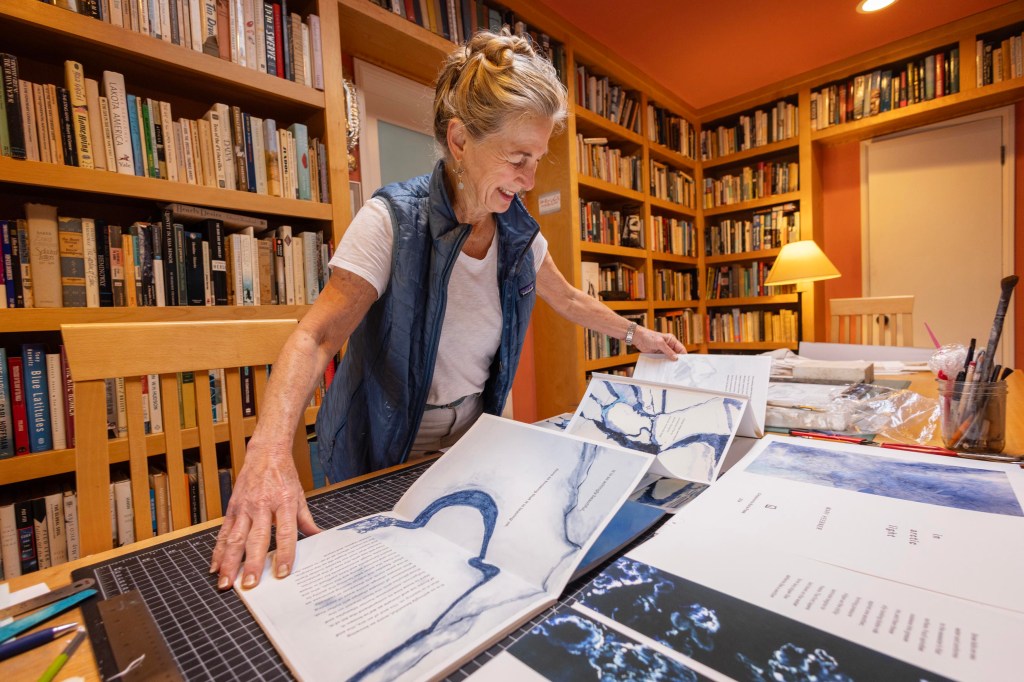
I love good art, and I have a deep affinity for Santa Barbara artists who work hard at it. I also love people who have a great sense of humor and face life with a sense of wonder, joy, and laughter. And I’m a sucker for a great love story, one that inspires you and makes you believe that harmony and goodness exist in the world.
Mary Heebner, one of our most extraordinary artists, combines all of these aspects, which is the reason why it was so important for me to tell you her story.
“I am an artist, and I don’t know if there is really any choice in this, as I’ve always worked with my hands to make something out of nothing,” Heebner shares. “Now I realize it is making things by hand that is the thread that binds my sense of my inner with my outer worlds.”
Since the 1970s, Heebner has excelled as an abstract artist, a published writer, and book artist. Heebner exhibits her work on paper nationally and internationally and has created 17 fine art press books. Her works are held in numerous public and private collections, including the Santa Barbara Museum of Art, the San Francisco Museum of Modern Art, and the United States Library of Congress, among many others.
“Mary is a poet of word and image,” says Patsy Hicks, director of education at the Santa Barbara Museum of Art. “Whether her own written reflection or reaction to physical spaces, or her reimagining — almost in a parallel visual dream — the words of others. Her interplay with place and poetry has a liquid rhythm.”
“You don’t experience art until you’re standing in front of it,” Heebner tells me, as she ushers me into her studio in downtown Santa Barbara, where I’m enveloped by her work — a series of large pieces that cover the walls from floor to ceiling.
“You have to experience art’s relationship to your own body,” she continues. “You experience the texture. Your vision is transformed by having seen that art.”
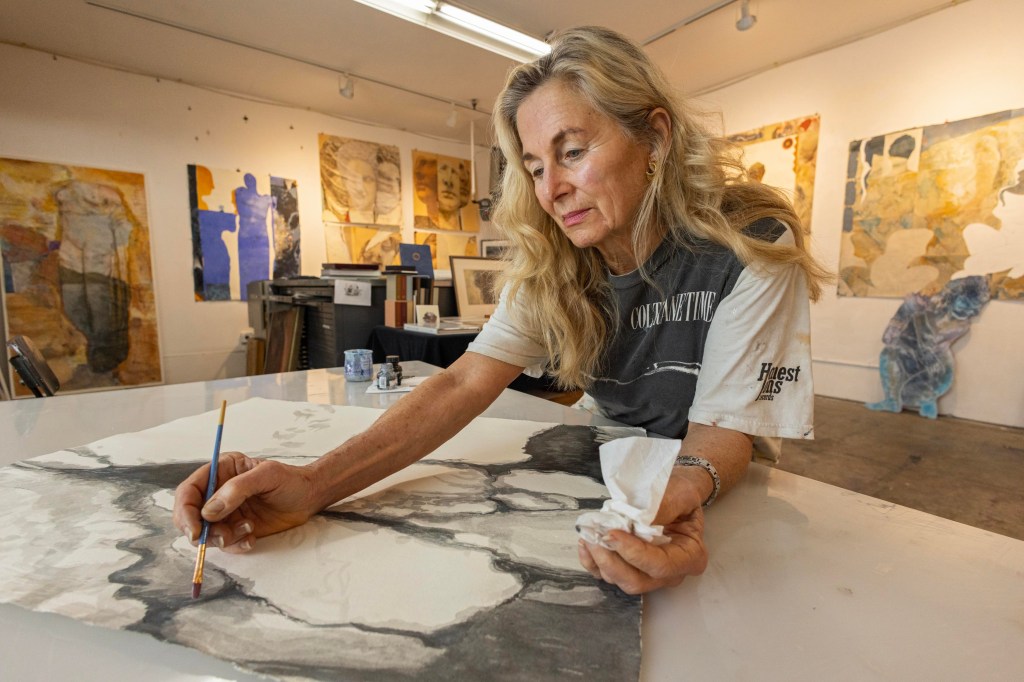
The display of her representations is inspired by the Greco-Roman floor mosaics that Heebner saw at the Museo de Arte Romano in Mérida, Spain, where they’ve been mounted on the wall.
“The simple shifting from floor to facing them vertically was stunning,” she says. “My own practice always begins with painting and layering papers on the floor, so I can see what I’m doing from different angles. When I finally pin the piece onto the wall, there are always revelations and surprises.”
The series is titled Resurrections from the Ruins, and it finds Heebner improvising new narratives based on sculptures and art from antiquity — adding a sense of intimacy and urgency to the work. Her pieces create a bridge between the old and the new — and it brings to the forefront the importance of ancient art to the modern world.
I reached out to Nancy A. Winter, senior researcher at the Ancient Mediterranean Studies Program at UCSB to share her perspective of Heebner’s endeavor. “Mary has put a totally contemporary spin on her interpretations of these ancient sculptures. While honoring the original beauty of the ancient statues, she has surrounded them with vibrant contemporary colors, and she has taken these standalone marble and bronze statues and put them into contexts subtly evoking their original storylines — or giving them entirely new messaging.”
“Every day when I see something startling, or quietly beautiful, I take note,” Heebner says. “It could be something from nature, or a film, or an amazing poem, jazz riff, or painting. Perhaps inspiration is just that, a breathing in — a palpable response to fleeting beauty.”
We walk around her studio as she explains and shows me her process and technique. “My preferred medium is collage,” she says. “It’s forgiving. It gives you a lot of latitude. You bake a handful of fragments and make a whole, a unity.”
Heebner uses paper for her collages, and it’s handmade and hand-painted. She also uses scraps left over from other projects. “I use all parts of the buffalo,” she says. “I save them and figure out how I can use them in something else.”
In antiquity, there was a widespread practice known as spolia, where stones from old structures were repurposed for new construction or decorative purposes. Heebner follows this tradition in her art. It’s as if she’s sculpting. The work may be two-dimensional, but there’s a tactility and movement that recall statues.

Heebner also generates one-of-a-kind books that coalesce her paintings with poetry. To hold one of these books and unspool its contents is to come into contact with a true work of art. In 1995, she founded Simplemente Maria Press, which produces her limited editions. She brings out her latest accomplishment for me to see: The Arctic Trilogy, which is her response to climate change. This work came about after several trips she undertook to the northern polar circle with her husband — renowned photographer Macduff Everton — who was on assignment with National Geographic. Each book set is composed of three tomes, made completely by hand. There are only 15 sets total.
“I have to design prototype after prototype to get it right,” she says. Heebner first makes big paintings, then creates digital prints of them and subsequently paints on them. The pages are startling and stimulating. You feel and sense the artist’s impressions of her travels. We see watercolors of the vanishing tracks of a polar bear, as well as the depiction of sheets of ice breaking in geometric patterns. Interspersed throughout are Heebner’s verses. The overall impression is that of a lament for a world that is disappearing.
“It’s a challenge to go from having an experience while traveling, to jotting down words, sketches, and then making a stab at imagery in the studio — and that might be enough,” she says. “But every once in a while, I see that there is a book in this mix. Sometimes it shows itself immediately; sometimes it takes years for a book to become. That is the beginning; from then, my task as an artist is to discover the essence, the core of the story, and then to find the form that best conveys it clearly in the most well-crafted and compelling way I can. My prototypes inform each next design choice. Limitations make me compress my ideas, and rethink what is most essential. Lots of editing — it is exasperating, fulfilling, layered, and surprising.”
I should point out that during our discussion about her work, Mary keeps things light and jovial. Her sentences are peppered with her infectious laugh, and every once in a while, when she gets excited about a particular subject or an idea, she does a little jig. “It’s important to play,” she says. “I have fun.” She is also an intent listener and is keenly curious.
Heebner’s father, Walter, was a musician, composer, and songwriter who became an executive at RCA Records and Capitol Records. He was in the Army during WWII and produced for V-Discs, which was a record label that was formed in 1943 to provide records for U.S. military personnel. Heebner’s mom, Claire, begged her own dad to let her go to business school and eventually got a job at RCA records. She headed a department called Race Music and eventually discovered singer Keely Smith, a jazz musician who most famously performed with her husband Louis Prima. Heebner’s parents met while working at RCA, and their first date was seeing Kiss Me, Kate on Broadway, she shares.
Subsequently the couple moved to California, and Mary was born at the St. Joseph Hospital in Burbank on April 19, 1951. She was bitten by a mosquito carrying encephalitis when she was 2 years old and had to have three operations to repair a lazy eye. To this day, Mary doesn’t see depth well as a result.

[Click to enlarge] Mary Heebner on an early morning walk in Bandon, Oregon | Credit: Macduff Everton
She recalls growing up surrounded by music and has early memories of being in the high chair and drawing. While still a kid, she drew the magnolia tree that was in their front yard, and her mom proudly hung it in their living room. Mary attended Campbell Hall in Los Angeles and took art classes. “I was a Beatles fan,” she reminisces, “so I was drawing pictures of Paul.” She also played the flute in the jazz band. Her dad forbade her to pick up string instruments because he couldn’t stand anyone playing them poorly. In school, she had to choose between music and art, and of course she chose art. She attended Providence High School in Burbank, where she commandeered the art room any chance she’d get. There she was surrounded by Hollywood kids, including Melissa Mathison, who went on to write classics like E.T. and the film version of The Black Stallion. They even formed their own magazine called CONCEPT featuring poetry and art. Mary also made one-of-a-kind books (a single copy) featuring her drawings and prose.
“I knew I would always do art,” says Heebner. “Art wasn’t a thing. It’s how I moved in the world.”
In 1969, she was accepted at UCSB with a Regents Scholarship. She recalls auditing Kenneth Rexroth’s beat poetry class — where she met students from the College of Creative Studies. She transferred to CCS when she was a junior. Around this time, she also got married to archeologist Steven Craig, who discovered some of the valuable ethnographic notes collected by the late John P. Harrington that contained, among other things, a wealth of information on Chumash place names. Craig and Heebner were married for 13 years. Their daughter Sienna was born when Mary was 22. She named her after the desert varnish in the Southwest where Mary dreamed of going and being Georgia O’Keeffe. At the time, painter Hank Pitcher commented, “Is your next kid going to be named Cadmium Red?” Sienna is now a Professor of Anthropology at Dartmouth College in New Hampshire.

Even as a young mother, Mary was determined to make a living as an artist and had a studio on State Street and Canon Perdido. She also worked at the Sun and Earth natural foods store in Isla Vista and waited tables at Jacques’s restaurant. She found a lot of freedom in Santa Barbara then. She’d go swimming and take a walk on the beach each morning and then would go and make art. In 1975, she decided to get a master’s at UCSB. She remembers Creative Studies being so different then. The lights were on all the time, and she’d work until late hours. “When I had my MFA show in 1977,” she says, “I sold half of my pieces then. I hand-painted all of my invitations.”
To date, Mary supports herself through the sale of her work. “I don’t have a day job,” she clarifies. “I’ve ridden this rollercoaster for so many years now.”
In 1988, years after her marriage had ended, Mary was feeling burnt out and needing a breather. A friend, Fred Canyon, had told her that photographer Macduff Everton would make trips to Mexico and take people with him. Everton, a fellow College of Creative Studies alum, had come to several of her openings, and he’d been wanting to ask her out. On an impulse, she called him. “Hey, I hear you’re going to Mexico and you take people along with you,” she told him. “I want to see the Caribbean blue.” Their trip was set, and Mary immediately started to get cold feet. A girlfriend told her not to panic and urged her to go to Mexico with Everton. “Do you have a credit card?” her friend asked. “If it gets weird, use it!”
“Going south to Mexico with Macduff changed my life completely,” Heebner says. “I was crazy in love. We were there for three weeks and could have been a lifetime. We covered 10,000 miles in a VW Bug in three weeks going to Veracruz, Yucatán, Oaxaca. I learned how to take in the natural world and make sense of it through art. I learned a lot about travel. We were of one mind. He allowed the occasion to happen for me to take on the big picture. We both had a sense of wonder about the world around us and we weren’t embarrassed to express it.”
They were married in 1989 and now live in downtown Santa Barbara.
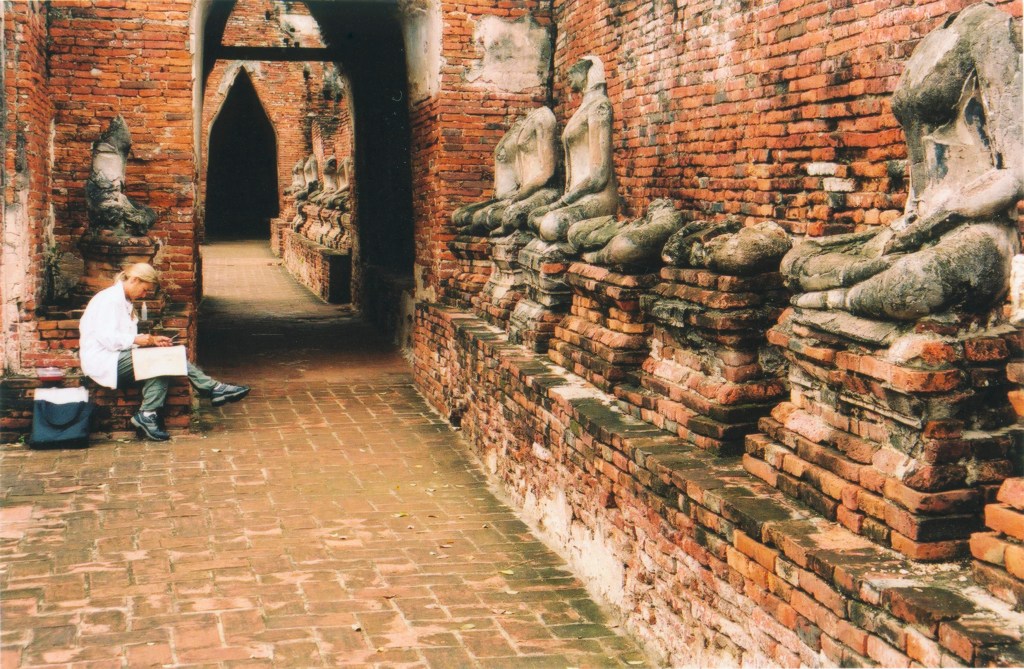
For 20 years, Everton traveled 230 days of the year, and Mary would join him as much as possible, drawing and keeping journals of their experiences that fueled her creativity. “I think of the places we’ve traveled,” she says. “The feel of the changing climate and the light and how it changes. Before meeting Macduff, I always looked at the details. I started to develop a double vision, looking at the details while also looking at the big picture. We’re each other’s best editors. He’s very honest with me. He’s always been enormously supportive. Macduff celebrates what I’m doing. We complete each other.”
Patsy Hicks comments about Heebner and Everton’s special relationship: “They are both curious lovers of the world and they nurture that in each other. They are playful, not didactic. Observing them, it seems that each day leads to tandem discoveries. They give each other space and time. They are not afraid to reinvent themselves, to roll with uncertainty, to find opportunity in challenge. They laugh together.”
Together, they have collaborated on three books: The Western Horizon; Patagonia, La Última Esperanza; and The Book of Santa Barbara. “We’ve had a good life,” Heebner says.
“I’m a weird landscape painter,” Heebner says about the richness and depth in her work. “I’m not a landscape painter, but the layers of land come out in my work. What’s underneath my feet — and the past.” She brings out a canvas and shows me the fossil-like detail in a painting inspired by her trip to Patagonia.
“Mary has a reverence for time and the physical world,” Hicks explains. “She sees stories in geology; she reads landscape as sacred text. She is aware of the poetry embedded in the caves of Lascaux, the sculptures and fragments of ancient artists’ hands. In all her work, not just those inspired by the art of antiquity, there is a palimpsest, a layering. She folds in the past while being intently focused in the moment of her own making. The myths and materiality become melded in the making.”
See maryheebner.com
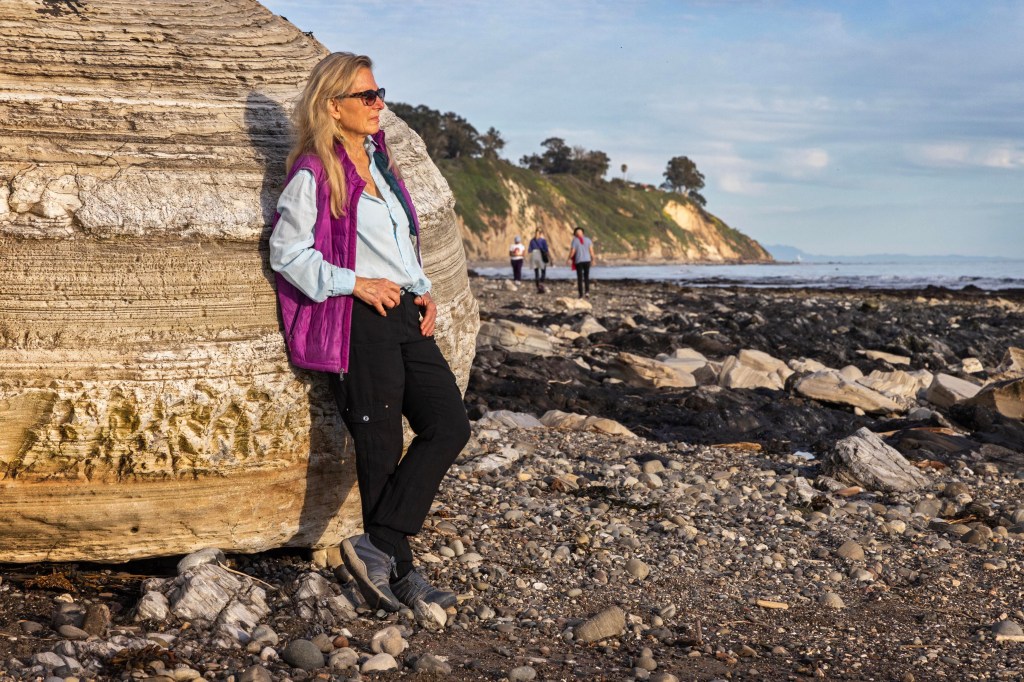

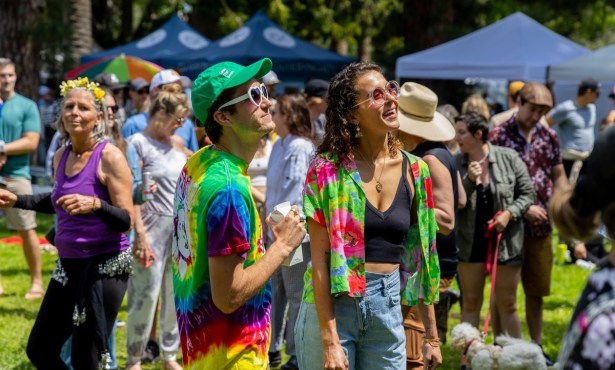
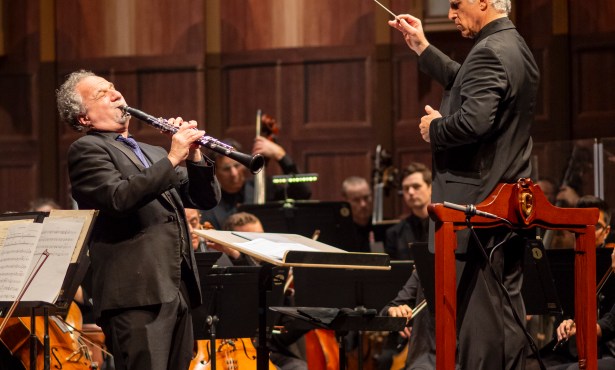

You must be logged in to post a comment.